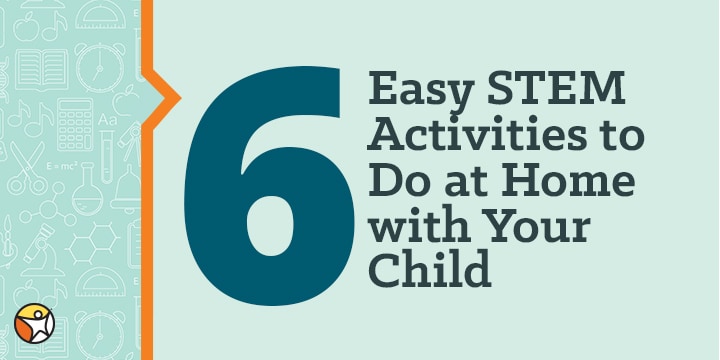5 Ways to Teach Students About Juneteenth
by Connections Academy
by Valerie Kirk
K–12 schools, including Connections Academy®, are integrating STEM principles into their curriculum, offering students an applied approach to learning science, technology, engineering, and math to develop our next generation of great innovators. To help spark a love of STEM in your child and motivate your student to learn, here are five easy STEM activities for kids. They’re designed to keep your child interested and engaged, with hands-on science experiments and learning activities you can do at home.
These activities are geared toward elementary school learners and require just a few simple supplies you probably already have on hand. Use the activities to supplement your child’s school curriculum or your homeschool program—or just to spend time with your child learning something new!
Did you know that acid in citrus fruits can make a light bulb glow? In this fun science experiment, your child will be introduced to the basic principles of electricity by building a simple circuit and making a battery out of a lemon.
What you need:
Follow these four simple steps to fruit battery success:
As your child gets older, add on to this activity with more advanced STEM projects to help them understand circuits and electrical properties. When they reach high school, they can further their STEM education and gain valuable job skills by taking career and technical education courses.
Kids love to play guessing games. Help them learn how much things weigh with a simple guessing game to support their math skills.
What you need:
Guess the weight:
You can extend this activity with more advanced math by having your child calculate the combined weight of two items once each has been weighed or by calculating the difference between their guess and the actual weight.
Introduce your child to the basic steps of the scientific method (which will help them when it comes time to enter the science fair) while learning about oxidation with this easy apple oxidation science experiment.
What you need:
Follow these five simple steps to learn about oxidation:
Your child can develop their planning, design, and problem-solving skills by creating a mini marble golf course in this STEM activity. The potential props for this activity are endless, so get creative while engineering a fun golf course!
What you need:
Design and build:
Once you have glued everything, give it some time to dry. When it’s ready, use the craft sticks to hit your marble on each hole, trying to get it into the paper cup.
In this fun science project, your child will learn about liquid density by creating a lava lamp.
What you need:
Follow these three simple steps to create your groovy lava lamp:
Looking for more STEM activities you can do with your child at home? Learn how to build a Rube Goldberg machine or take a virtual trip to the moon!
by Connections Academy
by Cassandra Polzin
by Dan Belenky
